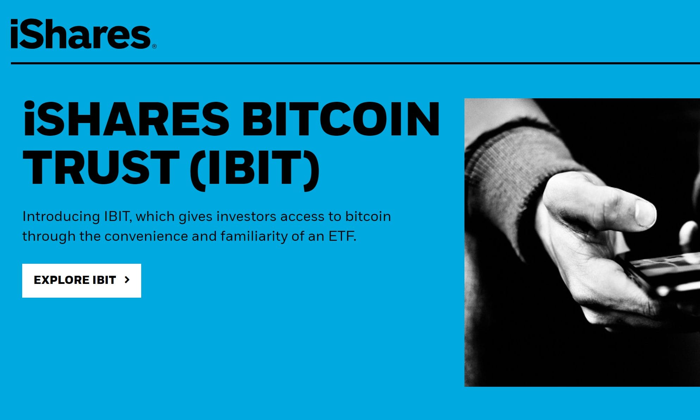Crypto ETF inflows are reaching remarkable heights, with recent reports indicating a surge to $7.5 billion as the market evolves. In an impressive twist, while Bitcoin’s appeal shows signs of fatigue, Ethereum is stepping up with significant inflows, reflecting a dynamic shift in crypto investment products. The latest data reveals that digital assets are drawing increasing interest, underpinned by strategic shifts within major crypto ecosystems. Furthermore, the ongoing debate of Bitcoin vs Ethereum continues to engage investors, revealing differing sentiments and investment strategies. With institutional players showing renewed confidence, especially post the recent market slump, the landscape for crypto ETFs looks promising.
The recent surge in cryptocurrency exchange-traded fund activity underscores a pivotal moment in the financial landscape surrounding digital currencies. Notably, the escalating levels of institutional capital being funneled into these investment vehicles highlight the growing acceptance and maturation of cryptocurrencies like Bitcoin and Ethereum. As alternative investment options expand, the rise in interest surrounding these digital assets signifies a transformative phase in how investors perceive and approach crypto assets. Furthermore, it’s essential to understand the implications of these inflows for various stakeholders, especially as Ethereum continues to garner substantial investments, leading the charge in the altcoin market. This burgeoning trend provokes a broader conversation on the evolution and future trajectory of crypto investment strategies.
The Rise of Crypto ETF Inflows
In recent weeks, the surge in crypto ETF inflows has been nothing short of remarkable, reaching a staggering $7.5 billion in 2025 alone. This significant figure highlights the growing interest in digital assets among institutional and individual investors alike. As the market for crypto investment products expands, more investors are recognizing the potential for diversification within their portfolios, particularly through offerings such as Bitcoin and Ethereum ETFs. The influx of capital is a strong indicator that confidence in these assets is regaining traction after previous downturns.
Moreover, Bitcoin-related investment products continue to dominate the market, showcasing the enduring appeal of Bitcoin amidst evolving crypto landscapes. With $557 million in weekly inflows recently recorded, Bitcoin remains a top choice for many, despite some fluctuations in performance. Institutional investors are especially attracted to Bitcoin ETF strategies, which allow them to gain exposure without the complexities of directly holding the underlying asset. This shift signals a broader acceptance and integration of cryptocurrencies within traditional financial systems.
Bitcoin ETF vs Ethereum: A Comparative Analysis
As we analyze the inflows into Bitcoin and Ethereum, it becomes evident that both assets have distinct characteristics that attract different types of investors. Bitcoin ETFs predominantly appeal to those looking for a digital store of value, often viewed as ‘digital gold’. Bitcoin’s recent performance, having increased by over 20% within a month, reinforces the narrative of its potential as a hedge against inflation. However, this hasn’t deterred Ethereum, which is gathering momentum with its innovative upgrades and vibrant ecosystem.
Ethereum’s focus on scalability and user experience, exemplified by recent developments post-Pectra upgrade, showcases its robustness as a platform for decentralized applications. With $205 million in inflows last week alone, Ethereum is capturing the attention of investors who prioritize growth potential in decentralized finance (DeFi) and non-fungible tokens (NFTs). In contrast, Bitcoin’s appeal lies in its price stability and broad recognition. The choice between Bitcoin and Ethereum is underscored by their differing use cases, and investors must weigh their risk appetite and investment goals when considering allocations between these two leading cryptocurrencies.
Market Dynamics: The Impact of Federal Reserve Policies
Recent actions and statements from the US Federal Reserve have injected a sense of caution into the crypto markets, influencing inflows into Bitcoin ETFs and other investment products. Investors are closely monitoring policy signals that could impact interest rates and liquidity, leading to a tempered approach when considering substantial investments in digital assets. Although Bitcoin continues to attract sizable inflows, a noted decrease from previous weeks indicates a reactive market where adaptations are necessary based on macroeconomic factors.
Despite the temporary cooling of Bitcoin inflows, the emergence of short-Bitcoin products highlights an interesting trend within the investor community. As more individuals hedge against potential downturns or speculate on market corrections, the crypto landscape remains vibrant and dynamic. This adaptability is crucial for sustaining interest in crypto investment products and for encouraging a healthy market where both Bitcoin and Ethereum can thrive amidst uncertainties.
Ethereum’s Surge: Factors Driving Inflows
The recent surge in Ethereum inflows can be attributed to several key developments within the Ethereum ecosystem. Notably, the leadership changes within the Ethereum Foundation have stirred excitement among investors, driving confidence in the platform’s future trajectory. The appointments of Hsiao-Wei Wang and Tomasz Stańczak have been pivotal, as they bring renewed energy towards enhancing the overall functionality and usability of Ethereum’s network. This, coupled with strategic focuses on Layer 1 scaling and Layer 2 support, positions Ethereum for continued growth in the halcyon world of digital assets.
Moreover, Ethereum’s innovative upgrades, such as Fusaka and Glamsterdam, are designed to significantly improve interoperability and user experience within the network. Such advancements not only entice new investors but also foster retention among existing users who are keen to capitalize on Ethereum’s evolving capabilities. As the narrative around Ethereum continues to unfold, its ascendance in the realm of altcoins serves as a representation of how technological advancements can translate into tangible market success.
Navigating the Altcoin Landscape: Sui and XRP Inflows
As Ethereum leads the charge in altcoin inflows, other digital assets like Sui and XRP are also making strides in capturing investor attention. For instance, Sui recorded $9.3 million in inflows, pushing its year-to-date total to $91 million, suggesting a growing interest in newer projects that offer unique features or promises of scalability. Investors looking outside the conventional Bitcoin and Ethereum frameworks are thus diversifying their portfolios with altcoins that show potential for substantial returns.
XRP’s inflows of $4.9 million bring its total to $263 million, demonstrating sustained interest despite legal challenges it has faced. This indicates that investors still see value in XRP’s utility within cross-border payment solutions, reflecting broader trends in enhancing transaction efficiency in the financial space. The ongoing dynamic between altcoins and established cryptocurrencies like Bitcoin and Ethereum illustrates the diverse landscape of crypto investment products, where innovation and use-case utility increasingly dictate market performance.
The Future of Crypto ETFs: Trends and Predictions
Looking to the future, the crypto ETF market is poised for continued growth, potentially reaching new heights as institutional adoption increases. The record inflows recently observed signal a broader acceptance of digital assets, spurred by a range of factors including regulatory clarity and technological advancements. As more countries endorse cryptocurrency as a legitimate asset class, the possibilities for market innovation expand, enabling a wider array of investment products.
Moreover, with Bitcoin and Ethereum leading the charge, other crypto assets are likely to gain traction as well. It’s essential for investors to stay informed about emerging trends within the crypto space, particularly as new ETFs targeting altcoins become prominent. The evolution of crypto investment products will undoubtedly shape investment strategies, allowing more diverse options for investors looking to capitalize on the shifting sands of digital asset opportunities.
Institutional Adoption of Bitcoin and Ethereum ETFs
The institutional adoption of Bitcoin and Ethereum ETFs has played a critical role in the rising inflows within the crypto market. Large institutional players are increasingly looking to hedge against traditional market fluctuations by incorporating crypto assets into their portfolios. The allure of regulated investment vehicles like ETFs allows these investors to gain exposure to Bitcoin and Ethereum without the complexities associated with direct crypto transactions. This trend highlights the significant shift towards mainstream acceptance of cryptocurrencies as viable investment options.
Additionally, as traditional financial institutions launch their own crypto ETF offerings, competition is expected to drive further growth in inflows. Institutional interest indicates not just a temporary trend but a longer-term commitment to integrating cryptocurrencies within established financial frameworks. Such developments signal a promising future, where Bitcoin and Ethereum could become staples of diversified investment portfolios, attracting an ever-increasing stream of capital into the digital asset space.
Regulations Shaping the Future of Crypto Investment Products
Regulatory frameworks are pivotal in shaping the landscape of crypto investment products, with recent developments signaling an evolving environment that could nurture further growth in the sector. As governments and regulatory bodies establish clearer guidelines for Bitcoin and Ethereum ETFs, this could provide much-needed stability and reassurance to investors. With regulations becoming more defined, it is expected that institutional players will be more willing to engage with crypto assets, thereby increasing ETF inflows and expanding market participation.
Moreover, as investors navigate the complexities of compliance and legal standards, the presence of regulated products becomes increasingly appealing. The establishment of protocols aimed at protecting investors and ensuring accountability will bolster confidence within the crypto marketplace. Consequently, clearer regulations could lead to a diversified array of crypto investment products that cater to varying risk appetites, establishing a vibrant ecosystem where innovative solutions can flourish.
Frequently Asked Questions
What are the recent trends in Crypto ETF inflows for Bitcoin and Ethereum?
Recent trends indicate that Crypto ETF inflows have reached a record high of $7.5 billion in 2025, with Bitcoin-related products attracting $557 million last week, although this is a decline from the previous week. In contrast, Ethereum is experiencing a surge, with $205 million in inflows attributed to its recent network upgrades.
How have Bitcoin ETF inflows changed recently compared to Ethereum inflows?
While Bitcoin ETF inflows remain substantial at $557 million, they’ve slowed compared to Ethereum inflows, which saw a significant increase of $205 million last week. This suggests a shift in investor sentiment, with more capital flowing into Ethereum amid positive developments in its ecosystem.
What factors are influencing current Crypto ETF inflows?
Current Crypto ETF inflows are influenced by several factors including market sentiment, regulatory signals from the US Federal Reserve, and recent developments within the Ethereum network such as leadership changes and the Pectra upgrade, which have spurred investor interest.
How do digital assets in crypto investment products compare month-to-month?
Digital assets within crypto investment products have shown significant growth, with a year-to-date total of $7.5 billion in inflows. This showcases strong investor confidence, especially in the wake of previous market downturns earlier in the year.
Is there a notable difference in performance between Bitcoin and Ethereum in terms of Crypto ETF inflows?
Yes, there is a notable difference; while Bitcoin ETF inflows are declining, Ethereum is outperforming as the top altcoin with significant inflows due to crucial updates and internal changes within its governance structure, reflecting a shift in investor focus from Bitcoin to Ethereum.
What is the outlook for Crypto ETF inflows given the recent Bitcoin vs Ethereum dynamics?
The outlook for Crypto ETF inflows appears optimistic, particularly for Ethereum, which is benefitting from developmental upgrades and growing investor confidence, potentially leading to higher inflows while Bitcoin may face short-term hurdles due to cautious market sentiment.
Why is Ethereum experiencing stronger inflows than Bitcoin in recent weeks?
Ethereum’s stronger inflows can be attributed to its recent Pectra upgrade and strategic leadership changes aimed at improving the network’s capability. These developments have captured investor interest, leading to a notable increase in capital inflows compared to Bitcoin.
What implications do recent Crypto ETF inflows have for future crypto investment products?
Recent Crypto ETF inflows indicate a recovery and renewed investor interest in digital assets. This may encourage the launch of more crypto investment products, especially targeting high-growth assets like Ethereum, as institutional confidence builds following a period of volatility.
| Key Point | Details |
|---|---|
| Total Crypto ETF Inflows YTD | $7.5 billion, a record high surpassing the previous $7.2 billion from February. |
| Recent Weekly Inflows | $785 million last week, signaling recovery from previous outflows. |
| Bitcoin Investment Products | Attracted $557 million last week but saw a decline from the prior $867 million due to cautious investor sentiment. |
| Short-Bitcoin Products | Logged $5.8 million in inflows for fourth consecutive week, indicating hedging or speculation on a pullback. |
| Ethereum Performance | Led altcoins with $205 million in inflows last week, totaling $575 million YTD due to recent upgrades. |
| Other Notable Altcoins | Sui attracted $9.3 million, while XRP gained $4.9 million; Solana experienced outflows of $890,000. |
Summary
Crypto ETF inflows reached an impressive total of $7.5 billion as of mid-May 2025, signaling a strong recovery in the digital assets market. After witnessing a period of outflows earlier this year, the market has bounced back with significant investments flowing into Bitcoin and Ethereum. Bitcoin still commands a substantial portion of the investments, though its inflows have started to slow, while Ethereum leads the altcoin sector thanks to its recent upgrades and leadership changes. This evolving landscape underscores the growing confidence among investors and hints at a promising future for cryptocurrency investments.
In recent weeks, crypto ETF inflows have surged, reaching an impressive $7.5 billion as investors navigate the complexities of digital assets. The latest report from CoinShares reveals that cryptocurrency investment products have seen a robust influx of $785 million just last week alone. This remarkable performance not only reflects renewed interest but also surpasses the previous all-time high of $7.2 billion achieved earlier this year. As Bitcoin fatigue sets in, other assets like Ethereum are drawing significant attention, boasting substantial inflows that mark a shift in market dynamics. With both Bitcoin and Ethereum at the forefront, the ongoing debate of Bitcoin vs Ethereum continues to shape investor strategies in the evolving crypto landscape.
The recent wave of investments into cryptocurrency exchange-traded funds, also known as crypto ETFs, highlights a growing passion for digital financial products. This sector has garnered significant capital, with more investors seeking to diversify their portfolios through these innovative offerings. The shift towards alternative digital currencies is evident as Ethereum gains traction, particularly amid enhancements like the Pectra upgrade. Meanwhile, traditional leaders such as Bitcoin continue to dominate capital inflows, though some investors are reevaluating their positions amid canny market movements. As digital asset investment strategies evolve, the competitive landscape between Bitcoin and its altcoin counterparts becomes increasingly dynamic.















